The Ultimate Guide to Needle Bread Crumb Production Line in 2024
Introduction to Needle Bread Crumb Production
In the realm of industrial food processing, the needle bread crumb production line stands as a pinnacle of efficiency and precision. Needle bread crumb production line utilizes advanced technology to create uniform and high-quality bread crumbs, catering to the demands of the modern food industry. This guide delves into the intricate details of needle bread crumb production, shedding light on its components, processes, and benefits.
The process of needle bread crumb production involves a series of carefully orchestrated steps, beginning from dough preparation to the final product packaging. Each phase plays a crucial role in ensuring the consistency and quality of the bread crumbs produced. Let's embark on a journey through the history and evolution of needle bread crumb technology to understand its significance in today's food manufacturing landscape.

History and Evolution of Needle Bread Crumb Technology
The evolution of needle bread crumb technology traces back to the early 20th century when industrial food processing witnessed significant advancements. Initially, bread crumbs were produced manually, involving tedious tasks of slicing, drying, and grinding bread loaves. However, with the advent of mechanization, the process underwent a revolutionary transformation.
Bread crumb production evolved rapidly, propelled by innovations in machinery and automation. The introduction of needle bread crumb production line marked a paradigm shift in the industry, offering unparalleled efficiency and consistency. Needle injection technology emerged as a game-changer, allowing for precise distribution of needles throughout the dough, resulting in uniformly textured bread crumbs.
Over the decades, needle bread crumb technology has continued to evolve, incorporating advancements in materials, design, and automation. Modern production lines are equipped with state-of-the-art features, such as computerized control systems and high-speed injection mechanisms, optimizing the production process for maximum output and quality.
Today, needle bread crumb production lines are indispensable assets in the food manufacturing industry, catering to diverse needs ranging from commercial bakeries to large-scale food processors. As technology continues to advance, we can expect further innovations in needle bread crumb production, driving efficiency, and quality to new heights.
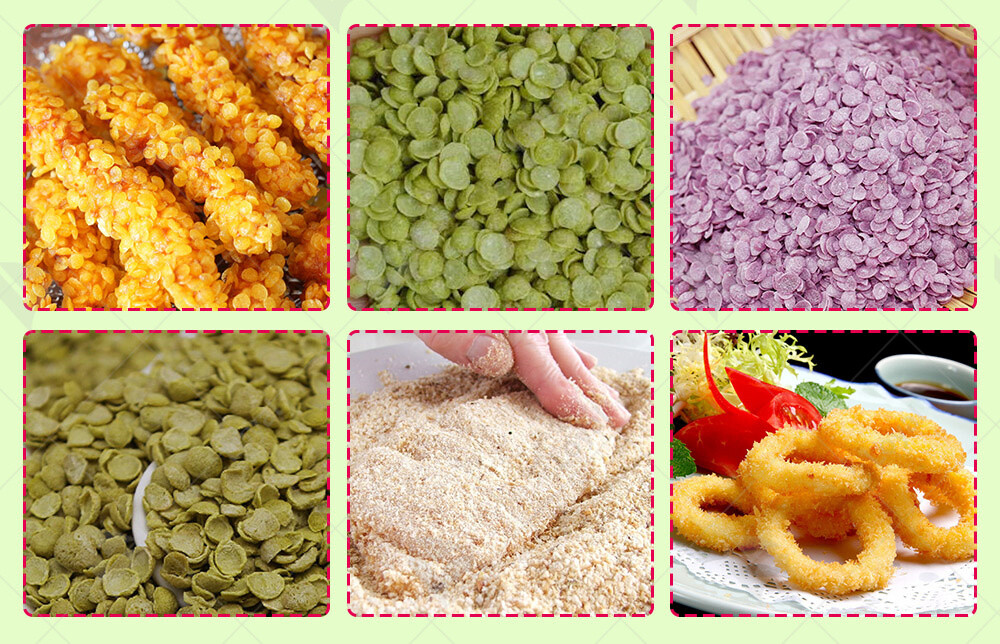
Benefits of Utilizing Needle Bread Crumb Production Lines
The utilization of Needle Bread Crumb Production Lines offers a myriad of advantages to food manufacturers seeking to streamline their processes and enhance product quality.
1. Enhanced Product Consistency: One of the primary benefits of utilizing Needle Bread Crumb Production Lines is the ability to achieve unparalleled consistency in bread crumb texture, size, and quality. The precision of needle injection technology ensures uniform distribution throughout the product.
2. Increased Production Efficiency: By automating the bread crumb production process, manufacturers can significantly increase their output while reducing labor costs. Needle Bread Crumb Production Lines are designed for optimal efficiency, allowing for continuous operation and minimal downtime.
3. Versatility in Applications: These advanced production lines are adaptable to a wide range of bread types, sizes, and shapes, making them suitable for diverse culinary applications. Whether producing fine bread crumbs for coatings or larger crumbs for stuffing and fillings, Needle Bread Crumb Production Lines offer versatility without compromising quality.
4. Improved Food Safety Standards: Needle injection technology minimizes the risk of contamination by ensuring thorough cooking and sterilization of the bread crumbs. This results in products that meet stringent food safety standards and regulations, instilling confidence in both manufacturers and consumers.
5. Cost Savings and ROI: While the initial investment in Needle Bread Crumb Production Lines may seem substantial, the long-term cost savings and return on investment (ROI) are undeniable. Reduced labor costs, increased production efficiency, and minimized product waste contribute to significant financial benefits over time.

Components of a Needle Bread Crumb Production Line
A Needle Bread Crumb Production Line consists of several essential components working seamlessly together to transform raw dough into high-quality bread crumbs. Below is a detailed overview of the key components:
Component | Description |
| Dough Preparation | This stage involves mixing and kneading the dough to achieve the desired consistency and texture. Precision dough mixers and kneaders are utilized to ensure uniformity. |
| Needle Injection System | The heart of the production line, the needle injection system employs specialized needles to inject steam into the bread dough, creating pores and facilitating the formation of bread crumbs during baking. |
| Baking Oven | After needle injection, the dough is transferred to a baking oven, where it undergoes controlled baking to achieve the desired color, texture, and flavor. Various types of ovens, including tunnel ovens and rotary ovens, are used based on production requirements. |
| Cooling and Drying | Once baked, the bread undergoes cooling and drying processes to reduce moisture content and enhance shelf stability. Cooling conveyors and drying chambers are employed for efficient cooling and drying. |
| Grinding and Sifting | The cooled bread is then passed through grinding and sifting equipment to achieve the desired particle size and consistency of the bread crumbs. |
| Packaging | Finally, the bread crumbs are packaged using automated packaging machinery, ensuring hygiene and product integrity. Packaging options include bags, pouches, and bulk containers, depending on customer preferences. |
Each component plays a crucial role in the seamless operation of a Needle Bread Crumb Production Line, contributing to the production of high-quality bread crumbs that meet the demands of today's discerning consumers.

Types of Needles Used in Bread Crumb Production
In the intricate process of needle bread crumb production, various types of needles play a crucial role in achieving the desired texture and quality of the final product. Let's delve into the different types of needles commonly used in bread crumb production lines:
Needle Type | Description |
| Hollow Needles | Hollow needles are frequently employed in bread crumb production for injecting air into the dough to ensure a light and airy texture. These needles come in various sizes to accommodate different dough consistencies. |
| Solid Needles | Solid needles are robust and durable, ideal for piercing through dense dough and ensuring uniform distribution of ingredients. They are commonly used in high-volume production settings. |
| Retractable Needles | Retractable needles offer versatility in bread crumb production lines, allowing for precise control over the injection depth. This feature is particularly useful for creating customized textures and flavors in bread crumbs. |
| Multi-Needle Systems | Multi-needle systems consist of multiple needles arranged strategically to maximize efficiency and throughput in bread crumb production. These systems can inject ingredients simultaneously, reducing production time and increasing output. |
Each type of needle brings its unique advantages to the bread crumb production process, contributing to the overall quality and consistency of the final product. Manufacturers carefully select the appropriate needle type based on factors such as dough composition, desired texture, and production volume.
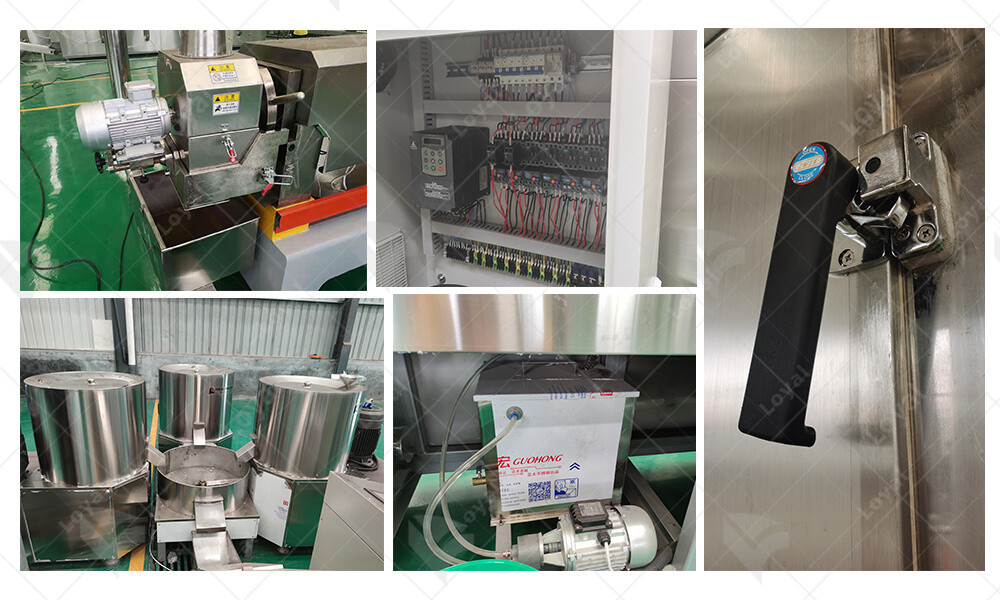
Dough Preparation and Mixing Equipment
The preparation of dough is a critical stage in needle bread crumb production, requiring specialized equipment to achieve the desired consistency and quality. Let's explore the key components of dough preparation and mixing equipment:
Mixing Tanks: These large vessels are equipped with agitators or paddles to thoroughly mix the ingredients and create a uniform dough consistency. Manufacturers can adjust mixing speeds and durations to accommodate different recipes and production requirements.
Dough Dividers: Dough dividers accurately portion the dough into individual units, ensuring consistency in size and weight. These machines streamline the production process, reducing labor costs and minimizing product waste.
Dough Sheeters: Dough sheeters roll out the dough to the desired thickness, preparing it for the next stage of processing. These machines feature adjustable rollers to achieve precise thickness levels and can accommodate various dough types, including soft and elastic dough.
Proofing Chambers: Proofing chambers provide the ideal environment for dough fermentation, allowing it to rise and develop flavor. These chambers maintain controlled temperature and humidity levels, promoting yeast activity and ensuring consistent dough quality.
Cutting and Shaping Equipment: Cutting and shaping equipment transform the proofed dough into the desired shapes and sizes for baking. From traditional loaf pans to custom molds, manufacturers utilize a variety of equipment to create distinctive bread crumb shapes and textures.
By investing in high-quality dough preparation and mixing equipment, manufacturers can optimize their production processes and achieve superior results in needle bread crumb production.

Needle Injection and Baking Process
In the realm of bread crumb production, the needle injection and baking process stand as pivotal stages that define the quality and texture of the final product. Needle injection involves the precise insertion of needles into the bread dough to create air pockets. This process is crucial for ensuring the light and airy texture of the bread, which translates into the desired crumb structure after baking. The needles used in this process are meticulously designed to penetrate the dough without damaging its integrity, thereby facilitating optimal aeration.
Once the needle injection process is completed, the dough undergoes the baking phase. Baking is a critical step where the dough is transformed into bread crumbs through the application of heat. During baking, the injected air pockets expand, causing the dough to rise and develop its characteristic texture. The temperature and duration of the baking process are carefully controlled to achieve the desired level of browning and crispiness in the bread crumbs. Modern bread crumb production lines employ advanced baking technologies, such as convection ovens and infrared radiation, to ensure uniform heating and consistent quality across the batch.
The integration of needle injection and baking processes in bread crumb production lines reflects the synergy between precision engineering and culinary artistry. By mastering these techniques, manufacturers can produce needle bread crumbs that meet the highest standards of quality, flavor, and texture.
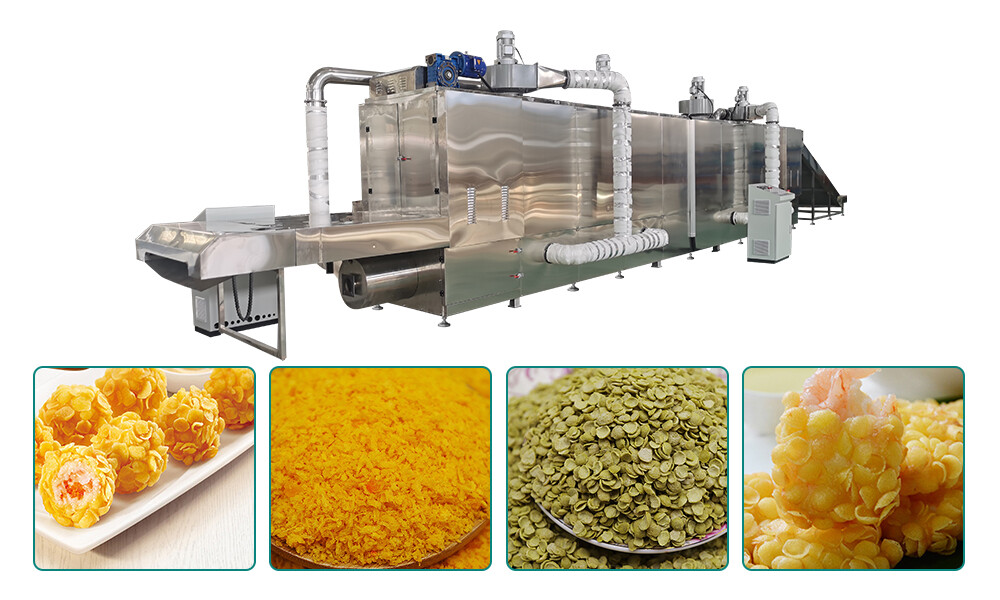
Cooling and Drying Systems in Bread Crumb Production Lines
After the baking process, the freshly baked bread crumbs undergo cooling and drying to stabilize their moisture content and enhance their shelf life. Cooling systems are employed to rapidly reduce the temperature of the hot bread crumbs, preventing overcooking and ensuring uniformity in texture. This is achieved through the use of conveyor belts or air cooling tunnels, where the bread crumbs are gently circulated to dissipate heat.
Once cooled, the bread crumbs proceed to the drying phase, where residual moisture is removed to optimize their crispiness and prevent microbial growth. Drying systems utilize a combination of heat and airflow to evaporate moisture from the surface of the bread crumbs. This can be achieved through techniques such as hot air drying or vacuum drying, which accelerate the moisture removal process while preserving the integrity of the bread crumbs.
Effective cooling and drying systems are essential for maintaining the quality and stability of bread crumbs throughout storage and distribution. By implementing advanced cooling and drying technologies, manufacturers can ensure that their needle bread crumbs retain their freshness, flavor, and crunchiness, delivering a superior culinary experience to consumers worldwide.
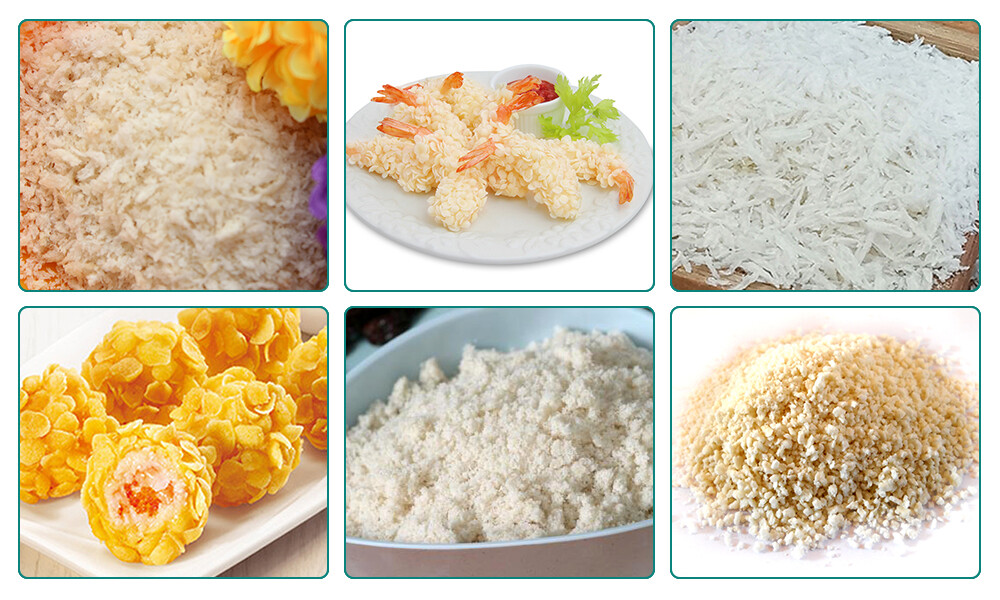
Quality Control Measures in Needle Bread Crumb Production
Ensuring top-notch quality in needle bread crumb production is paramount to meet consumer expectations and maintain industry standards. Here are key quality control measures employed in needle bread crumb production lines:
Raw Material Inspection: The process begins with a thorough inspection of raw materials such as flour, water, and yeast. Each ingredient must meet specified quality criteria to ensure the final product's consistency and taste.
Dough Consistency Monitoring: Precise dough consistency is crucial for needle bread crumb production. Advanced sensors and monitoring systems are employed to ensure the dough's uniformity and texture throughout the production process.
Needle Injection Precision: The needle injection process, where needles penetrate the dough to form crumbs, requires precise control to avoid variations in crumb size and texture. Automated systems with adjustable parameters enable operators to fine-tune needle injection for optimal results.
Temperature and Humidity Control: Maintaining optimal temperature and humidity levels during baking and drying stages is essential to achieve the desired texture and shelf life of bread crumbs. Continuous monitoring and adjustment of baking ovens and drying chambers ensure consistent product quality.
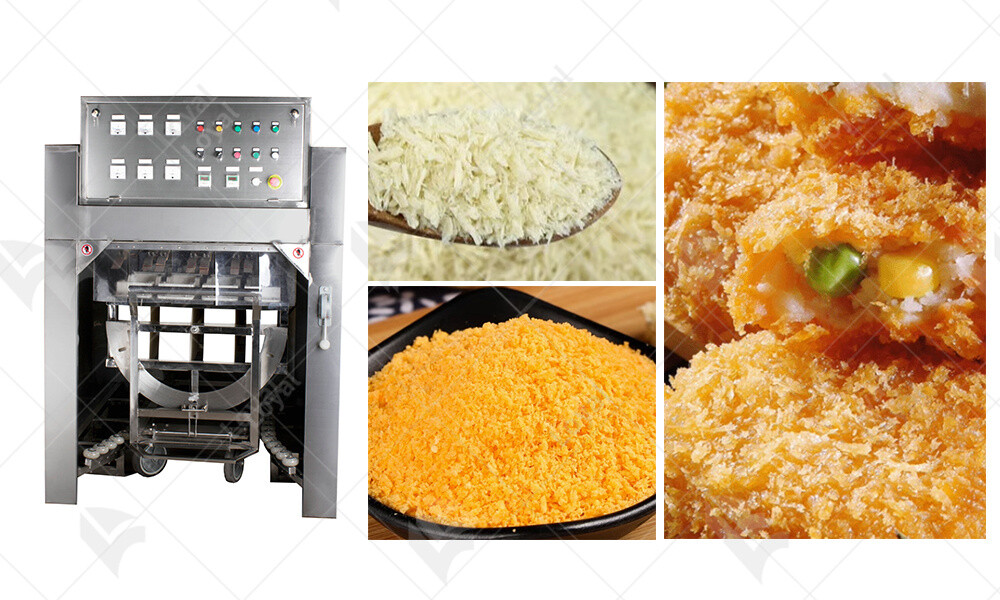
Innovations and Future Trends in Needle Bread Crumb Technology
As technology advances, needle bread crumb production continues to evolve with innovative solutions and future trends shaping the industry. Here's a glimpse into the exciting developments on the horizon:
Automated Production Lines: The integration of robotics and artificial intelligence in needle bread crumb production lines streamlines processes, enhances efficiency, and reduces labor costs. Automated systems can handle tasks such as dough mixing, needle injection, and quality inspection with precision and speed.
Enhanced Sustainability Practices: With growing environmental concerns, manufacturers are exploring eco-friendly alternatives in needle bread crumb production. From utilizing renewable energy sources to reducing water consumption and waste generation, sustainability initiatives are driving industry-wide changes.
Advanced Quality Assurance Technologies: Emerging technologies such as machine learning and predictive analytics are revolutionizing quality assurance in needle bread crumb production. Real-time data analysis enables proactive identification of potential issues, minimizing production downtime and ensuring consistent product quality.
Customization and Personalization: Consumer preferences are becoming increasingly diverse, prompting manufacturers to offer customizable and personalized bread crumb products. Modular production lines equipped with flexible configurations allow for the creation of tailored solutions to meet specific market demands.
These innovations and future trends in needle bread crumb technology are poised to reshape the industry landscape, driving efficiency, sustainability, and product differentiation in the years to come.

Reference
1.Baker Perkins - bakerperkins.com
2.GEA Group - gea.com
3.Heat and Control - heatandcontrol.com
4.Hosokawa Micron - hosokawamicron.com
5.Fritsch Group - fritsch-group.com












